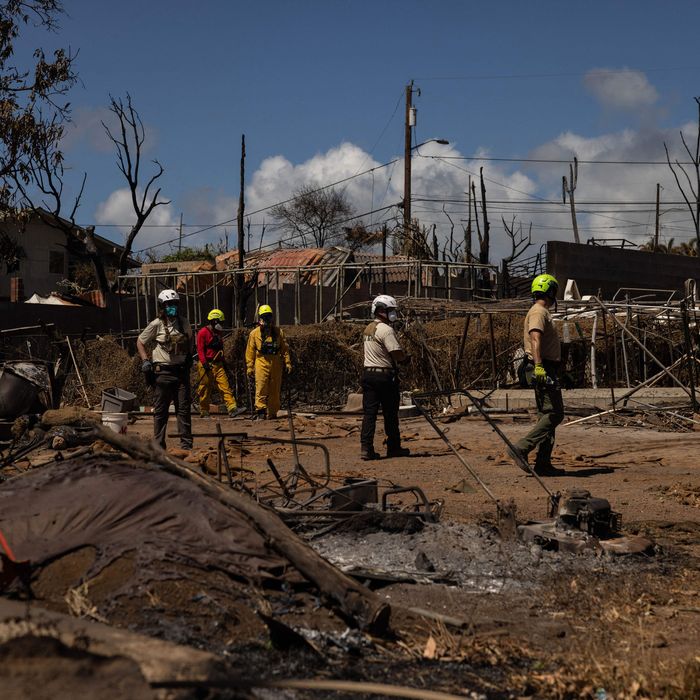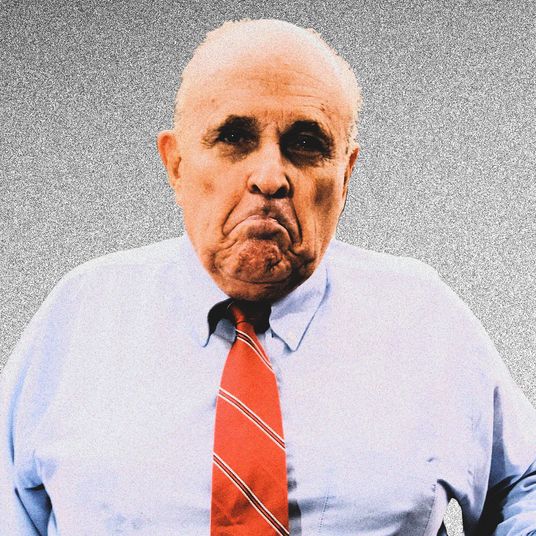
The Maui fire’s human toll is horrific: 115 people have been confirmed dead after a rapidly moving blaze swept across the west side of the Hawaiian island earlier this month, making it the deadliest wildfire in the United States in over a century. “No one has ever seen this that is alive today,” Maui police chief John Pelleiter said at a news conference in August. “Not this size, not this number, not this volume — and we’re not done.”
Officials still expect that the number of dead will rise as the FBI and local law enforcement officials try to whittle down the number of missing. But the number which remained stubbornly high a month after the blaze came down substantially on September 8, when Hawaii Governor Josh Green announced that 66 people remain missing — down from 385 people earlier in the week. As the slow work to find the unaccounted for drags on, below is everything we know about those still missing on Maui.
It’s going to take a long time to vet the missing list
With the search process completed on land in the destroyed town of Lahaina and the search of the ocean in the surrounding harbor almost fully complete, it is now up to the FBI and Maui police to interview families of the missing to determine if they made it out safe, or if they have reason to believe they were lost to the fire. It will take months to slowly vet the names on the list of the missing to provide a more accurate number of victims. But the announcement from Governor Josh Green on September 8 that the list was cut down from 385 to 66 was a great hope to the island.
The search for the dead enters the sea
With the search of the scorched town of Lahaina 99 percent complete, FBI teams are now looking 200 yards into the harbor, where many residents fled to escape the flames and smoke when the fire tore through town. Governor Josh Green said that the teams are not expected to find substantial numbers of new victims in the water. “We will find possibly the remains of some individuals on the boats that were out there,” he said on August 29. “There are a couple other sensitive spots that were underwater that had to be investigated. But we’re not anticipating a significant increase.”
Green added that he does not expect the death toll to rise much further, suggesting that the hundreds of those unaccounted for will be tracked down.
Utility company denies fault in wildfires
On August 24, Maui County filed a lawsuit against Hawaiian Electric, alleging that the utility company’s lack of action directly resulted in the deadly fires. Specifically, the county claims the company failed to power down their electrical equipment on August 7 despite a National Weather Service warning, adding that their “energized and downed power lines ignited dry fuel such as grass and brush, causing the fires.” Maui County also claims that Hawaiian Electric failed to maintain the power grid and electrical system, which resulted in several fires on August 8.
Hawaiian Electric pushed back against the lawsuit on August 27, writing in a statement that the cause of the second wildfire “has not been determined.” The company maintains that the power lines in Lahaina were not energized for more than six hours by the time the second wildfire broke out on August 8.
“We were surprised and disappointed that the County of Maui rushed to court even before completing its own investigation,” said Shelee Kimura, the president and CEO of Hawaiian Electric. “We believe the complaint is factually and legally irresponsible.”
The number of missing comes way down
The number of missing people has fluctuated since the fires destroyed the town of Lahaina in early August. As of August 21, the number of missing people was at 850 — then shot up to 1,100 as the FBI vetted its database of missing people to contact and mark safe. That number fell again as efforts to contact those missing people expanded. On August 25, Maui County released a list of 388 people who were still missing.
The vetted list helped bring the number of missing further down, with several people on there wondering why they were marked as unaccounted for when they had reported themselves safe to the FBI or to FEMA.
The names of those still missing are made public
The list of the 388 also including the names of the missing so that family can either mark their loved ones as safe or inform officials that they are still unaccounted for. “We know that it will help with the investigation,” Police Chief John Pelletier said in a statement. “We also know that once those names come out, it can and will cause pain for folks whose loved ones are listed. This is not an easy thing to do, but we want to make sure that we are doing everything we can to make this investigation as complete and thorough as possible.”
Why has the number of missing fluctuated so much?
The aftermath of the Maui fire left evacuees scattered across the island and rescuers searching through rubble for the remains of victims of a blaze hot enough to melt cars. (As of August 30, 44 of the 115 victims have been identified.) The large number of tourists on the island and the substantial number of homeless residents in Lahaina also pose major challenges, as tourists were likely to head to the mainland — not necessarily aware that they were being searched for — and homeless residents do not always have easily traceable contact information. There was also a substantial number of immigrants living alone on the island whose families are abroad. Cell service was also lost for many in the early days of the fire, making it difficult to call family members to mark oneself as safe.
“Any time you’ve got a situation where there’s no communication, disrupted transportation, those lead to breakdowns in information sharing as well,” a spokesperson for Hawaii Emergency Management Agency told the Washington Post.
Steven Merril, the FBI special agent in charge of the bureau’s Honolulu field office, told NBC News that the toll of missing person “doesn’t necessarily mean that these people, are in fact, missing.” Looking at past fires helps put the trend in perspective. After the 2018 Camp Fire, which was the deadliest in modern U.S. history until Maui, over 1,000 people were reported missing. By the time the difficult work of identifying remains was completed, 85 deaths were confirmed — a tragic number, but far short of the early missing figures. Still, officials fear that the death toll could still rise considerably on Maui.
That the odds are in their favor is hardly a comfort to those searching for their missing friends and family. “It’s not a numbers game,” Maui police chief John Pelletier said last week. Beth McLeod, a resident of Rochester, New York, has been calling databases searching for her mother-in-law who has not checked in. “We love you, and we’re not going to stop at anything to find you,” McLeod told the local NBC station.
DNA is crucial to identifying victims and finding the missing
The search effort has ended on Maui, but due to the intensity of the blaze, identifying remains is a tremendous challenge: Officials have encouraged those with missing loved ones to submit DNA to a database to help identify victims whose partial remains have been recovered. (A little over 40 of the victims have been identified so far.) “Realistically, we’re going to have a number of confirmed, we’re going to have a number of presumed,” Maui Police Chief John Pelletier said at a press conference on August 25. Pelletier compared the challenge of finding human remains to the September 11 attacks. “Two thousand people on 9/11 were not recovered,” he said. “We have an entire town that was destroyed.”




























